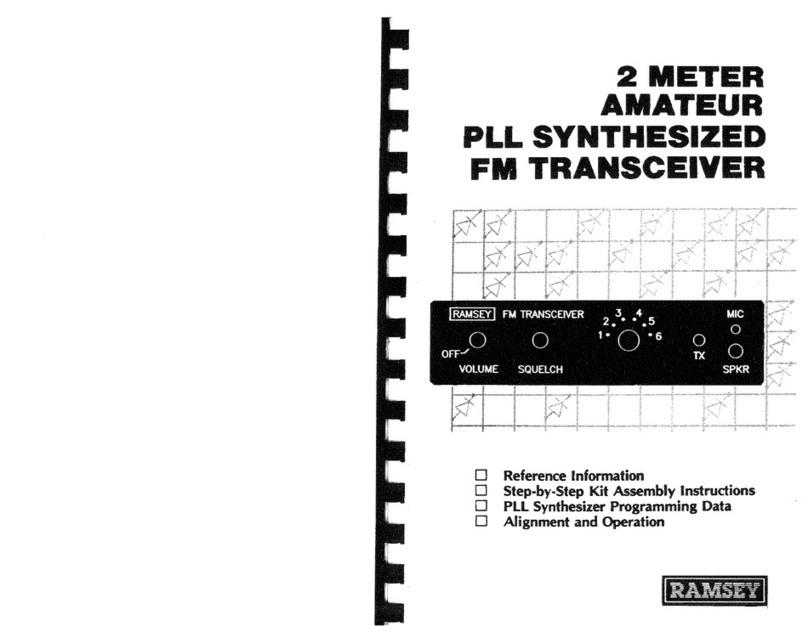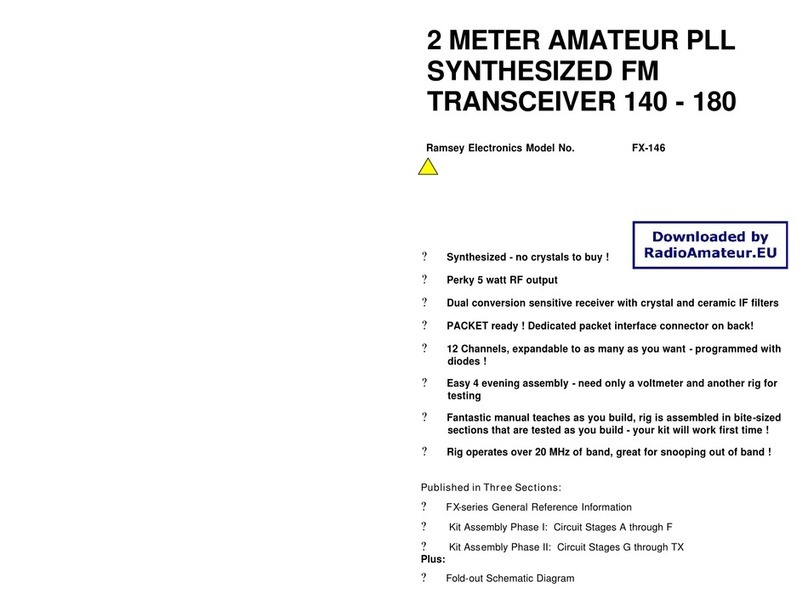
INTRODUCTION
to FX-series VHF Transceiver Kit Assembly
For the 1990's, Ramsey Electronics has adopted a "Learn As You Build"
philosophy for ALL our electronics kits. We feel that licensed ham operators
should know about the equipment they use, and also should have the desire
to understand how their gear works. Additionally, it has been our corporate
response to all those urgings by public officials that both students and their
parents need to become sharper in science and math. This "Learn as You
Build" approach to electronics hobby kits is now evident in all Ramsey
Electronics build-it-yourself kits from our under-$5 student kits up to this
synthesized VHF transceiver suitable for ham radio and public service
applications alike.
We think that "learning (and UNDERSTANDING) as we build" is especially
essential in a more sophisticated project such as the Ramsey FX-series VHF
transceivers. In fact, we are so convinced of this basic need that this kit
instruction manual departs from the traditional scheme of separating
assembly directions from a "theory of operation."
The FX-series of Ramsey VHF/UHF Transceivers puts today's FM 2-way
radio technology back in YOUR hands at a budget price. Our idea of
"budget" looks far beyond the modest purchase price to our goal that you
can maintain your FX- unit in good operating readiness with no need for
expensive shop service. On the other hand, we also have made the
transceiver design as abuse-proof and rugged as possible. "Alignment,"
traditionally an intimidating many steps process is very easy, quick and fool-
proof in this circuit design.
Instead of separate stage-by-stage assembly directions plus separate theory
information, these FX- instruction booklets highlight your transceiver's
operational theory, often a single component at a time, with actual
construction steps provided as follow-up after each explanation. The
assembly sequences are easy to find in the following pages. You indeed
have the freedom to solder first and read all about it later. We hope, though,
that you'll take it easy, learning as you build, and then enjoy the reliability of
your Ramsey FX Transceiver for a long time to come.
The "style" of our kit-building directions presumes that you are peeking at
our multi-color parts layout sheet while seeing that the very same parts
outlines are imprinted on the component side of your FX- PC-board. Our
smaller kits do not justify any need for on-board imprinting (silk-screening).
Therefore, such kits provide more detailed published explanations for
identifying correct locations for inserting and soldering parts.
You'll install EVERY FX- part perfectly by using our simple step-by-step kit
building process. And you'll know the WHY of most assembly steps, if not all
of them. Before you start, THINK about what you'll create from those bags of






























